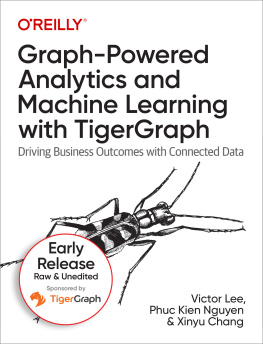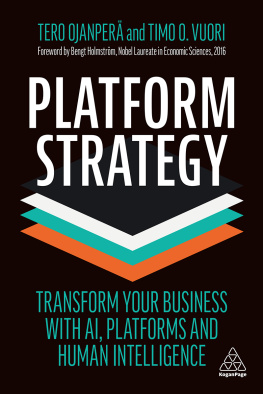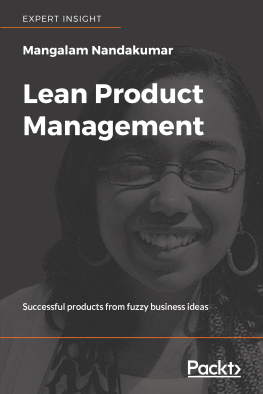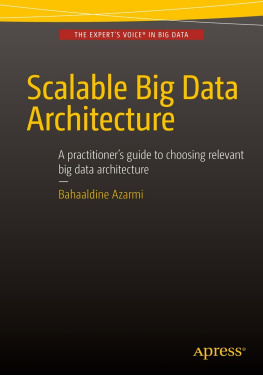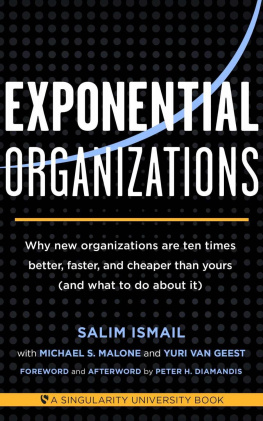HBR Press Quantity Sales Discounts
Harvard Business Review Press titles are available at significant quantity discounts when purchased in bulk for client gifts, sales promotions, and premiums. Special editions, including books with corporate logos, customized covers, and letters from the company or CEO printed in the front matter, as well as excerpts of existing books, can also be created in large quantities for special needs.
For details and discount information for both print and ebook formats, contact .
Copyright 2020 Harvard Business School Publishing Corporation
All rights reserved
No part of this publication may be reproduced, stored in or introduced into a retrieval system, or transmitted, in any form, or by any means (electronic, mechanical, photocopying, recording, or otherwise), without the prior permission of the publisher. Requests for permission should be directed to , or mailed to Permissions, Harvard Business School Publishing, 60 Harvard Way, Boston, Massachusetts 02163.
The web addresses referenced in this book were live and correct at the time of the books publication but may be subject to change.
Library of Congress Cataloging-in-Publication Data
Names: Iansiti, Marco, 1961- author. | Lakhani, Karim R., author.
Title: Competing in the age of AI : strategy and leadership when algorithms and networks run the world / Marco Iansiti and Karim Lakhani.
Description: Boston, MA : Harvard Business Review Press, [2020] | Includes index.
Identifiers: LCCN 2019024137 | ISBN 9781633697621 (hardcover)
Subjects: LCSH: Artificial intelligenceIndustrial applications. | Competition. | Leadership. | Business planning.
Classification: LCC Q335 .I323 2020 | DDC 658/.0563dc23
LC record available at https://lccn.loc.gov/2019024137
To my mother, Laura, my wife, Malena, and to all my amazing kids.
M. I.
To Shaheen, Sitarah, and Doulat, the women in my life who make it all worthwhile.
K. R. L.
Contents
- Artificial intelligence is transforming the way firms function and is restructuring the economy
- Software, networks, and AI are changing the fundamental nature of companiesthe way they operate and compete
- The core of the new firm is a scalable decision factory, powered by software, data, and algorithms
- To use the full power of digital networks and AI, firms need a fundamentally different operating architecture
- AI-enabled firms will transform and rearchitect to leverage the power of data, networks, and artificial intelligence
- Digital firms enable and require a new approach to strategy
- What happens when digital firms compete and collide with traditional firms
- Ethical challenges are generated by the transformation of the nature of firms
- The age of AI is changing the rules of the game, with fundamental implications for all of us
- The age of AI is defining a new set of challenges for leaders of digital firms, traditional organizations, startups, regulatory institutions, and communities
The Age of AI
Its a Rembrandt!
So shouted the neatly dressed, white-haired gentleman after quickly raising his hand. Several other members of the audience called out in agreement. One man, who ran a leading art museum in Australia, said he recognized the unique style of the seventeenth-century Dutch master, but he seemed puzzled that he couldnt recall this specific painting, shown in .
FIGURE 1-1
The next Rembrandt

Source: reproduced by permission of ING and J. Walter Thompson.
Then a video began to play, and the room fell silent as the narrator described the works provenance. The portrait, it turns out, was not a Rembrandt. Rather, it was created in 2016 by a team from advertising agency J. Walter Thompson and Microsoft as a promotion for ING Group, the Dutch bank. The painting consists of more than 148 million pixels, based on 168,263 scans of Rembrandts three hundred known paintings. A team of data scientists, engineers, and Rembrandt experts applied learning algorithms to analyze the portraits and select specific characteristics that were typical in some way of the artists work: they determined that the new painting would feature a Caucasian male between the ages of thirty and forty, with facial hair; he would wear a hat and a white collar; and he would face to the right. More algorithms were used to assemble the components into a fully formed composition. A 3-D printer then deposited thirteen layers of paint-based UV ink on a canvas in a way that closely imitated the masters brushstrokes. Thus The Next Rembrandt, as the work is called, came into being via artificial intelligencesome 350 years after the artists death.
AI is becoming a force in the arts, connecting various disciplines and media and expanding the range of artistic possibilities. With its Arts and Machine Intelligence (AMI) program, for example, Google is organizing a community of artists and engineers to explore how creative practices are being transformed. The community applies the kinds of style-transfer techniques used in The Next Rembrandt across a broad variety of subjects and media, from film to music.
But AMI and other similar programs are taking AI even further into the realm of creation: in addition to replicating existing styles, AI is being used to create completely new works of art. This endeavor transforms not only the method for crafting the work of art but also the organization and process that conceives and creates it. Ahmed Elgammal, director of the Art & Artificial Intelligence Lab at Rutgers University, is working with an art-generating algorithm called AICAN that is programmed to produce novelty without substantial help from human artists. The program starts with training data drawn from a vast assemblage of paintings dating from the fourteenth century and produces something fundamentally different: paintings inspired by established artistic styles but entirely new. Thus, the AI algorithms do not merely expand the range of creation and distribution methods for artists; they also model the course of art history, offering insight into arts long progression from figuration to abstraction and helping us understand processes that have been running in the collective unconscious for more than half a millennium.
This is only the beginning. If a computer, aided by a few computer scientists and some fairly basic AI, can simulate, collaborate with, or possibly even extend the work of creative genius, we can almost guarantee that no field of human endeavor will remain independent of artificial intelligence. In discipline after discipline and industry after industry, digital networks and AI are becoming pervasive, defining a new age for business and for all of us.
Competing in the Age of AI
AI is the runtime that is going to shape all of what we do.
Satya Nadella, Microsoft CEO
AI is becoming the universal engine of execution. As digital technology increasingly shapes all of what we do and enables a rapidly growing number of tasks and processes, AI is becoming the new operational foundation of businessthe core of a companys operating model, defining how the company drives the execution of tasks. AI is not only displacing human activity, it is changing the very concept of the firm.


